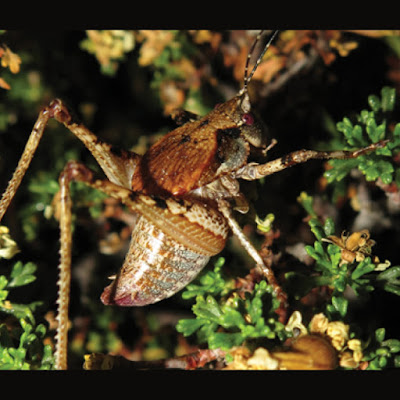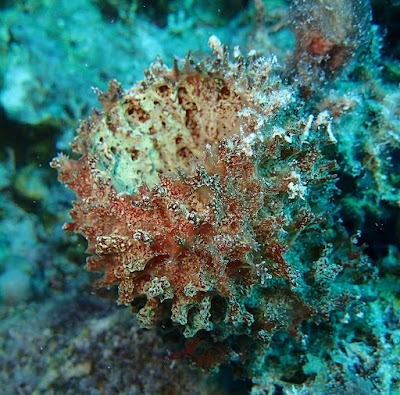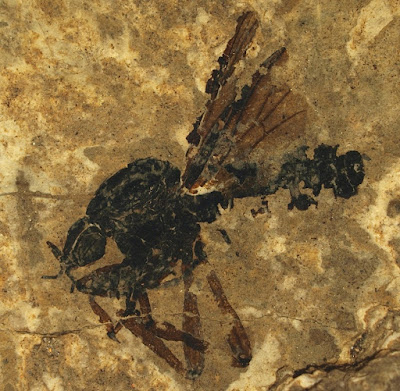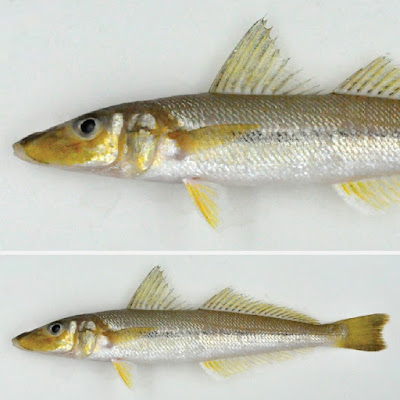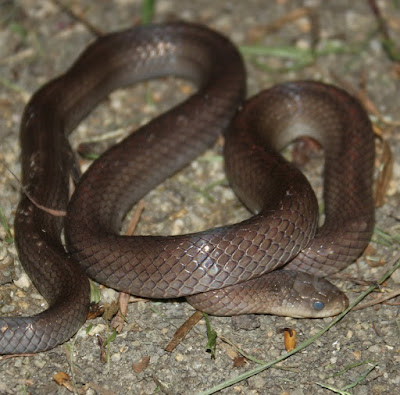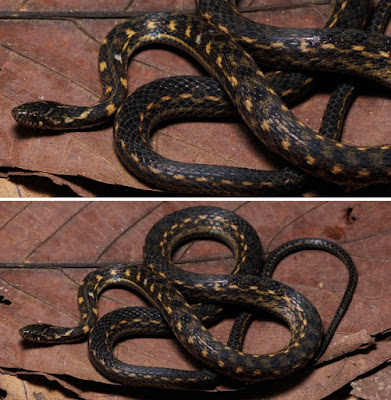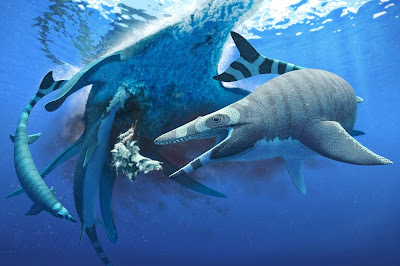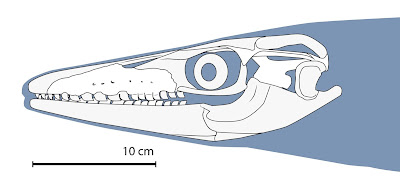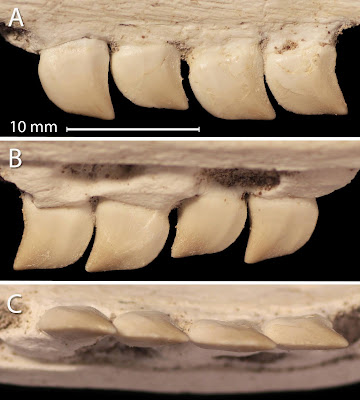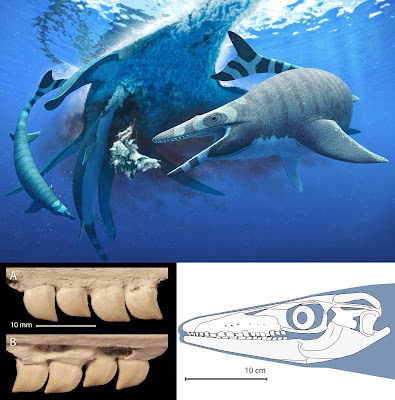[Most Recent Entries] [Calendar View]
Tuesday, January 19th, 2021
| Time | Event | ||||
| 2:50a | [Entomology • 2021] A Revision of the Shield-back Katydid Genus Neduba (Orthoptera: Tettigoniidae: Tettigoniinae: Nedubini)
Abstract The Nearctic shield-back katydid genus Neduba is revised. Species boundaries were demarcated by molecular phylogenetic analysis, morphology, quantitative analysis of calling songs, and karyotypes. Nine previously described species are redescribed: N. carinata, N. castanea, N. convexa, N. diabolica, N. extincta, N. macneilli, N. propsti, N. sierranus, and N. steindachneri, and twelve new species are described: N. ambagiosa sp. n., N. arborea sp. n., N. cascadia sp. n., N. duplocantans sp. n., N. inversa sp. n., N. longiplutea sp. n., N. lucubrata sp. n., N. oblongata sp. n., N. prorocantans sp. n., N. radicata sp. n., N. radocantans sp. n., and N. sequoia sp. n. We chose a lectotype for N. steindachneri and transferred N. picturata from a junior synonym of N. diabolica to a junior synonym of N. steindachneri. Diversification in this relict group reflects cycles of allopatric isolation and secondary contact amidst the tumultuous, evolving geography of western North America. The taxonomy and phylogenies presented in this revision lay the groundwork for studies of speciation, biogeography, hybrid zones, and behavioral evolution. Given that one Neduba species is already extinct from human environmental disturbance, we suggest conservation priorities for the genus. Keywords: Orthoptera, bioacoustics, biogeography, cryptic species, ring species, chromosome evolution, mitochondrial capture, California floristic province Neduba castanea (Scudder, 1899) Jeffrey A. Cole, David B. Weissman, David C. Lightfoot, Norihiro Ueshima, Elżbieta Warchałowska-Śliwa, Anna Maryańska-Nadachowska and Will Chatfield-Taylor. 2021. A Revision of the Shield-back Katydid Genus Neduba (Orthoptera: Tettigoniidae: Tettigoniinae: Nedubini). Zootaxa. 4910(1); 1-92. DOI: 10.11646/zootaxa.4910.1.1 | ||||
| 3:18a | [Porifera • 2021] Mycale Species of the Tropical Indo-West Pacific (Demospongiae, Poecilosclerida)
Abstract The species of the cosmopolitan sponge genus Mycale occurring in the tropical Indo-West Pacific region and adjacent subtropical waters are reviewed taxonomically. Specimens incorporated in the collections of the Naturalis Biodiversity Center form the basis of this comprehensive study, supplemented by (type) specimens borrowed from or examined in other institutions. Specimens available numbered 351, belonging to 44 species, including 14 species new to science, Mycale (Aegogropila) prognatha sp.nov., Mycale (Carmia) amiri sp.nov., Mycale (Carmia) fungiaphila sp.nov., Mycale (Carmia) monomicrosclera sp.nov., Mycale (Carmia) tenuichela sp.nov., Mycale (Carmia) tubiporicola sp.nov., Mycale (Carmia) tydemani sp.nov., Mycale (Mycale) asigmata sp.nov., Mycale (Mycale) grandoides sp.nov., Mycale (Mycale) sundaminorensis sp.nov., Mycale (Naviculina) mascarenensis sp.nov., Mycale (Paresperella) sceptroides sp.nov., Mycale (Paresperella) seychellensis sp.nov., Mycale (Zygomycale) sibogae sp.nov. Three species, indicated by the designation ‘aff.’, were not definitely assigned to known or new species due to uncertainty of their identity. The genus Kerasemna, previously considered a junior synonym of Mycale, was revived as an additional subgenus Mycale (Kerasemna). One species, previously assigned to the genus Desmacella as D. lampra De Laubenfels is here reassigned to Mycale, subgenus at present undecided. Additionally, species previously reported from the region but not represented in our collections are briefly characterized and discussed. We propose new names Mycale (Mycale) mauricei nom.nov. for Mycale macrochela Burton (junior primary homonym of Mycale fistulata var. macrochela Hentschel) and Mycale (Mycale) bouryesnaultae nom.nov. for Mycale (Mycale) fibrosa Boury-Esnault & Van Beveren (junior primary homonym of Mycale (Aegogropila) adhaerens subsp. fibrosa Koltun). Keys to the species of each subgenus occurring in the region are provided. The opportunity of having studied this comprehensive set of species and specimens from the tropical Indo-West Pacific is taken to review and discuss the morphological and biogeographical data gathered so far on the genus Mycale. The genus currently comprises approximately 255 accepted species, with highest diversity focused in tropical Atlantic and Indo-West Pacific regions as well as in warm-temperate Mediterranean-Atlantic regions. Keywords: Porifera, Sponges, taxonomy, new species, Indonesia, Western Indian Ocean, biogeography Mycale (Arenochalina) euplectellioides (Row, 1911) Rob W.M. van Soest, Ratih Aryasari and Nicole J. de Voogd. 2021. Mycale Species of the Tropical Indo-West Pacific (Porifera, Demospongiae, Poecilosclerida). Zootaxa. 4912(1); 1-212. DOI: 10.11646/zootaxa.4912.1.1 | ||||
| 3:46a | [PaleoEntomology • 2021] A Revision of Fossil Bibionidae (Insecta: Diptera) from the Oligocene of Germany
Abstract We revise the available material of fossil Bibionidae from the Oligocene of Germany, except for the Early Oligocene site of Kleinkems which has recently been revised. The bulk of the material originates from the Late Oligocene Lagerstätten of Rott and Enspel. One new species, Bibio castaneipennis sp.n., is described from Enspel. The following new combinations are established: Hesperinus heeri (Heyden & Heyden, 1865) comb.n. (previously Plecia heeri), Plecia dubia (Germar, 1837) (previously Phthiria dubia). Plecia collossea (Heyden & Heyden, 1865) is removed from synonymy with Plecia morio (Heer, 1849), Plecia gracilenta (Heyden & Heyden, 1865) is removed from synonymy with Plecia lygaeoides (Heer, 1849). The following new synonymies are established: Plecia elegantula Meunier, 1915 = Penthetria rottensis Statz, 1943 = Penthetria scita Statz, 1943 = Hesperinus heeri (Heyden & Heyden, 1865); Plecia superba Meunier, 1915 = Plecia imperialis Statz, 1943 = Plecia philippi Statz, 1943 = Plecia collossea (Heyden & Heyden, 1865); Helophilus primarius Germar, 1837 = Plecia abava (Heyden & Heyden, 1865) = Plecia satyrus Statz, 1943 = Plecia dubia (Germar, 1837); Plecia expositia (Heyden & Heyden, 1865) = Plecia grandaeva (Heyden & Heyden, 1865) = Plecia antenata (Heyden & Heyden, 1865) = Plecia elongata (Heyden & Heyden, 1865) = Plecia pulchella Meunier, 1915 = Plecia hypogaea (Heyden & Heyden, 1865); Plecia schineri (Heyden & Heyden, 1865) = Plecia macrocephala (Heyden & Heyden, 1865); Plecia lapidaria (Heyden & Heyden, 1865) = Bibio brachypteroides Meunier, 1915 = Plecia vulpina Statz, 1943 = Plecia pinguis (Heyden & Heyden, 1865); Plecia lapidaria nigra Statz, 1943 = Plecia sluiteri Meunier, 1917; Plecia veterana (Heyden & Heyden, 1865) = Plecia stygia (Heyden & Heyden, 1865); Bibio spadicea Statz, 1943 = Bibio aerosus Statz, 1943; Bibio heydeni Meunier, 1920 = Bibio comosella Statz, 1943 = Bibio germari Meunier, 1920; Plecia heroica Heyden & Heyden, 1865 = Bibio giganteus Unger, 1841; Bibio infumatus Meunier, 1915 = Bibio mimas L. Heyden, 1870. The following names are placed as nomina dubia pending rediscovery of the type material: Plecia volgeri (C.H.G. Heyden, 1859); Bibio janus L. Heyden, 1870; Bibio tertiarius C.H.G. Heyden, 1862; Dilophus deletus (C.H.G. Heyden, 1862). The male morphotypes described but not formally named by Statz (1943) are tentatively assigned to named species. Keywords: Diptera, Hesperinus, Penthetria, Bibio, Bibiodes, Dilophus, Germany, new species, new combination Bibio castaneipennis John Skartveit and Sonja Wedmann. 2021. A Revision of Fossil Bibionidae (Insecta: Diptera) from the Oligocene of Germany. Zootaxa. 4909(1); 1-77. DOI: 10.11646/zootaxa.4909.1.1 | ||||
| 4:03a | [Ichthyology • 2021] Sillago nigrofasciata • A New Species of Sillago (Perciformes, Sillaginidae) from the southern Coast of China
Abstract A new Sillago species, the black-banded sillago, Sillago nigrofasciata sp. nov., is described based on 302 specimens sampled from the southern coast of China. Morphological comparisons have been conducted between the new species and ten other Sillago species. The results show that the new species is characterized by a black mid-lateral band below the lateral line when fresh; other characteristics are similar to those of Sillago sihama but subtle differences exist on the swim bladder between Sillago nigrofasciata sp. nov. and S. sihama. A detailed description and illustrations are provided for the new species. The validity of this new species is also supported by a genetic comparison using sequences of the mitochondrial cytochrome c oxidase subunit I (COI) gene. Keywords: DNA barcoding, molecular phylogenetic analyses, morphology, swim bladder, taxonomy
Family Sillaginidae Richardson, 1846 Sillago Cuvier, 1817 Sillago nigrofasciata sp. nov. Etymology: The specific name nigrofasciata is a compound adjective derived from the Latin words referring to the wide mid-lateral black longitudinal band of this species, a diagnostic character of the species. Diagnosis: Relatively large body and usually with a wide mid-lateral black stripe from opercular to caudal peduncle; dorsal-fin rays X–XII (mostly XI), I+20–22, soft anal fin rays 20–22; scales in lateral line 67–75, scales above lateral line 4–6; gill rakers 2–4+5–8; vertebra: abdominal 14 or 15 (mostly 14), modified 3–7 (mostly 4 or 5), caudal 13–18, and total 34 or 35 (mostly 34) (Table 3). Swim bladder with two posterior extensions, the origin of the duct-like process at the terminus of swim bladder and start at the joint of roots of two posterior extensions (Fig. 4). Habitat: Habitat is similar to S. sihama in nearshore areas and frequently entering estuaries for considerable periods, it is common along the beaches, sand bars, and mangrove creeks with sandy substrates. Depths ranging from 0 to 20 m, and frequently captured by trawling vessels. Distribution: Sillago nigrofasciata sp. nov. was only found along the southern coast of China including the coastal waters of the South China Sea and the Taiwan Strait. Actually, its distribution range is similar to that of S. sihama in China (Fig. 1). Jia-Guang Xiao, Zheng-Sen Yu, Na Song and Tian-Xiang Gao. 2021. Description of A New Species, Sillago nigrofasciata sp. nov. (Perciformes, Sillaginidae) from the southern Coast of China. ZooKeys. 1011: 85-100. DOI: 10.3897/zookeys.1011.57302 | ||||
| 9:44a | [Herpetology • 2021] Oligodon phangan & O. promsombuti • Two New Kukri Snake Species (Colubridae: Oligodon) from the Nakhon Si Thammarat Mountain Range, and Addition of O. ocellatus to the Fauna of Thailand
Abstract We describe two new Kukri snakes of the genus Oligodon from the Nakhon Si Thammarat Mountain Range, southern peninsular Thailand. Oligodon phangan sp. nov., endemic to Pha-Ngan Island, Surat Thani Province, is characterized by a maximal known SVL of 369.1 mm; 12 maxillary teeth, the posterior three enlarged; 17-17-15 dorsal scale rows; 163–166 ventrals; 33–42 divided subcaudals; a single anal; dorsal color brown with a pair of discreet paravertebral and lateral stripes; no dorsal or supracaudal bands, blotches or crossbars; background color of belly pinkish-orange; underside of tail immaculate. Oligodon promsombuti sp. nov., whose type-locality is Khao Phanom Wang, Surat Thani Province, is also found in Trang Province, and is characterized by a maximal known SVL of 552.7 mm; 12 maxillary teeth, the posterior three enlarged; 17-17-15 dorsal scale rows; 177 ventrals; 40 divided subcaudals; a single anal; deeply forked hemipenes lacking spines; dorsal color blackish brown with nearly indistinct paravertebral stripes; no dorsal or supracaudal blotches or crossbars; background color of belly ivory, heavily speckled with subrectangular blackish blotches. We tentatively allocate both new species to the informal Oligodon-cyclurus-group. They are the 5th and 6th Oligodon species endemic to Thailand. We add Oligodon ocellatus, so far known only from Cambodia, southern Laos and southern Vietnam, to the Thai fauna, based on a specimen from Chong Mek, Ubon Ratchathani Province. Keywords: Reptilia, Thai-Malay Peninsula, Thailand, Oligodon ocellatus, Oligodon phangan sp. nov., Oligodon promsombuti sp. nov., taxonomy, limestone, karst Olivier S. G. Pauwels, Kanokorn Thongyai, Pajapon Chantong and Montri Sumontha. 2021. Two New Kukri Snake Species (Colubridae: Oligodon) from the Nakhon Si Thammarat Mountain Range, and Addition of O. ocellatus to the Fauna of Thailand. Zootaxa. 4908(4); 537–557. DOI: 10.11646/zootaxa.4908.4.7 | ||||
| 10:41a | [Herpetology • 2021] A Revision of the Dark-bellied, Stream-dwelling Snakes of the Genus Hebius Thompson, 1913 (Squamata: Natricidae) with the Description of A New Species from China, Vietnam and Thailand
Abstract Species of the genus Hebius Thompson, 1913 with 17 or 19 dorsal scale rows at midbody and an overall dark venter are reviewed, including the two species previously known as Parahelicops annamensis Bourret, 1934 and Pararhabdophis chapaensis Bourret, 1934. Specimens with 17 scale rows are morphologically similar to Hebius venningi (Wall, 1910), which is here redefined based on external morphological characters such as scalation, and dorsal and ventral patterns. Consequently, Natrix nigriventer Wall, 1925 is resurrected from its synonymy with Hebius venningi, whereas Natrix taronensis Smith, 1940, previously considered a subspecies of H. venningi or a full species by some authors but without justification, is here confirmed to full species status. Another group of species, mostly similar in coloration and pattern to the H. venningi group but with 19 dorsal scale rows, includes H. modestus (Günther, 1875), H. deschauenseei (Taylor, 1934) and a new species which is described herein based on specimens from northern Vietnam, southern China and north-eastern Thailand due to distinct morphological differences. We also provide updated taxonomic accounts for the species of this group, including an identification key and distribution maps. Keywords: Reptilia, Keelback snakes; taxonomic revision; new species; Hebius venningi Hebius taronensis (Smith, 1940) Patrick David, Gernot Vogel, Truong Quang Nguyen, Nikolai L. Orlov, Olivier S. G. Pauwels, Alexandre Teynié and Thomas Ziegler. 2021. A Revision of the Dark-bellied, Stream-dwelling Snakes of the Genus Hebius (Reptilia: Squamata: Natricidae) with the Description of A New Species from China, Vietnam and Thailand. Zootaxa. 4911(1); 1-61. DOI: 10.11646/zootaxa.4911.1.1 | ||||
| 2:03p | [Paleontology • 2021] Xenodens calminechari • A Bizarre Mosasaurid (Mosasauridae, Squamata) with Shark-like Cutting Teeth from the upper Maastrichtian of Morocco, North Africa
ABSTRACT The mosasaurids (Mosasauridae) were a group of lizards that became highly specialized for marine life in the mid-Cretaceous. By the end of the Cretaceous, they had undergone an adaptive radiation, and showed a wide range of body sizes, locomotor styles, and diets. Their ranks included piscivores, apex predators, and durophages. Here, we report a new taxon, Xenodens calminechari gen. et sp. nov., from the upper Maastrichtian phosphates of Morocco, with dental specializations unlike those of any known reptile. Teeth form a unique dental battery in which short, laterally compressed and hooked teeth formed a saw-like blade. Unique features of tooth structure and implantation suggest affinities with the durophagous Carinodens. The tooth arrangement seen in Xenodens not only expands known disparity of mosasaurids, but is unique among Squamata, or even Tetrapoda. The specialized dentition implies a previously unknown feeding strategy, likely involving a cutting motion used to carve pieces out of large prey, or in scavenging. This novel dental specialization adds to the already considerable disparity and functional diversity of the late Maastrichtian mosasaurids and marine reptiles. This provides further evidence for a diverse marine fauna just prior to the K-Pg extinction. Keywords: Mosasauridae, Squamata, Cretaceous, Maastrichtian, Africa SQUAMATA Oppel (1811) MOSASAURIDAE Gervais (1852) MOSASAURINAE Gervais (1852) Xenodens calminechari gen. et sp. nov. Etymology. The genus name is derived from the Greek xenos, ‘strange’, and Latin dens, ‘tooth’. The species name derives from the Arabic calminechari (کالمنشار),‘like a saw’. Holotype. MHNM.KH.333 (Figs. 3-5) Horizon and locality. Upper Maastrichtian of Sidi Chennane phosphate mines, Khouribga Province, Morocco. Matrix and preservation are typical of Sidi Chennane, with a bleached white bone and pale, grey matrix characteristic of Couche III at Sidi Chennane (Fig. 3). The matrix is coarse, with a small fraction of fine particles, and contains teleost fragments. This coarse matrix is typical of fossils from upper Couche III at Sidi Chennane.
Nicholas R. Longrich, Nathalie Bardet, Anne S. Schulp and Nour-Eddine Jalil. 2021. Xenodens calminechari gen. et sp. nov., A Bizarre Mosasaurid (Mosasauridae, Squamata) with shark-like cutting teeth from the upper Maastrichtian of Morocco, North Africa. Cretaceous Research. In Press, 104764. DOI: 10.1016/j.cretres.2021.104764 Dinosaur-era sea lizard had teeth like a shark New study identifies a bizarre new species suggesting that giant marine lizards thrived before the asteroid wiped them out 66 million years ago. |
| << Previous Day |
2021/01/19 [Calendar] |
Next Day >> |
